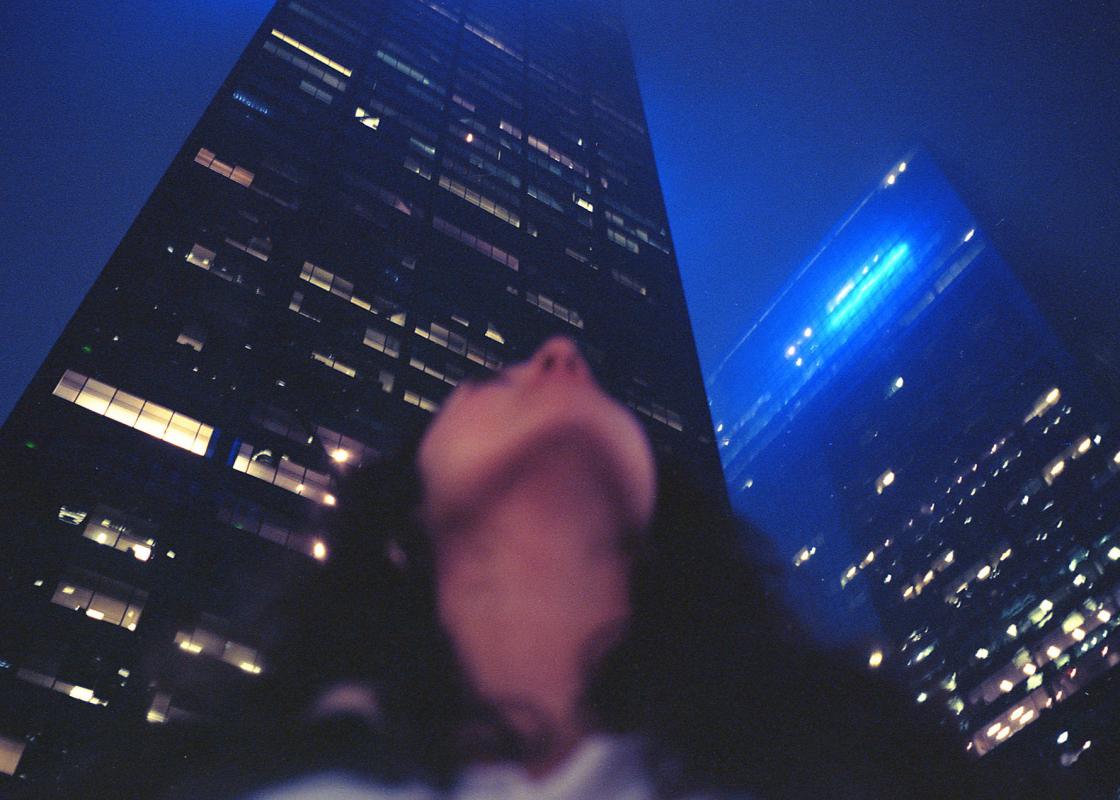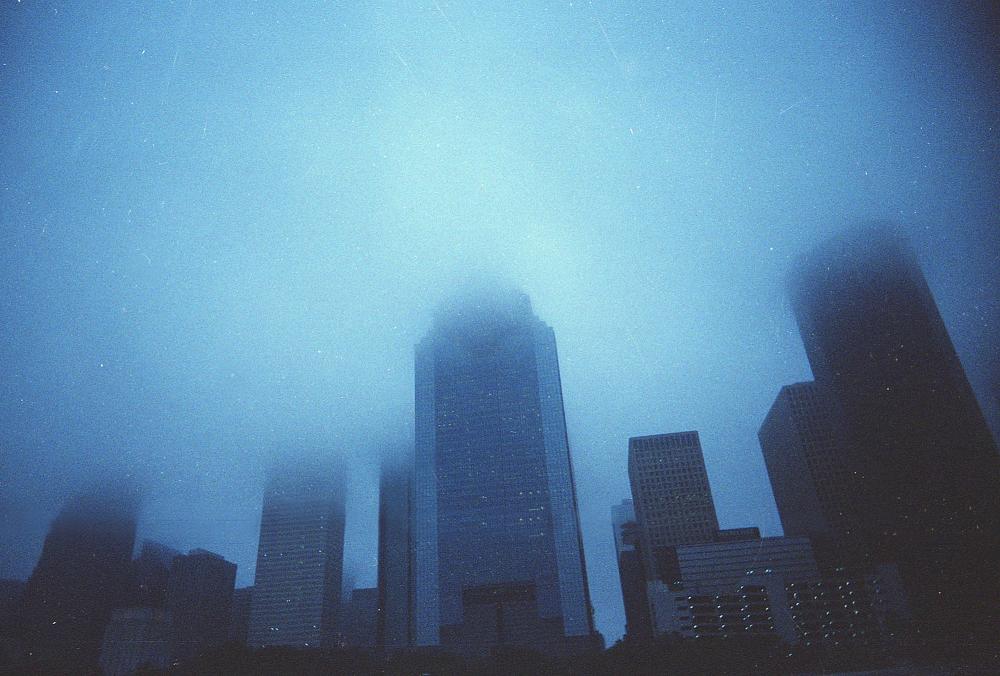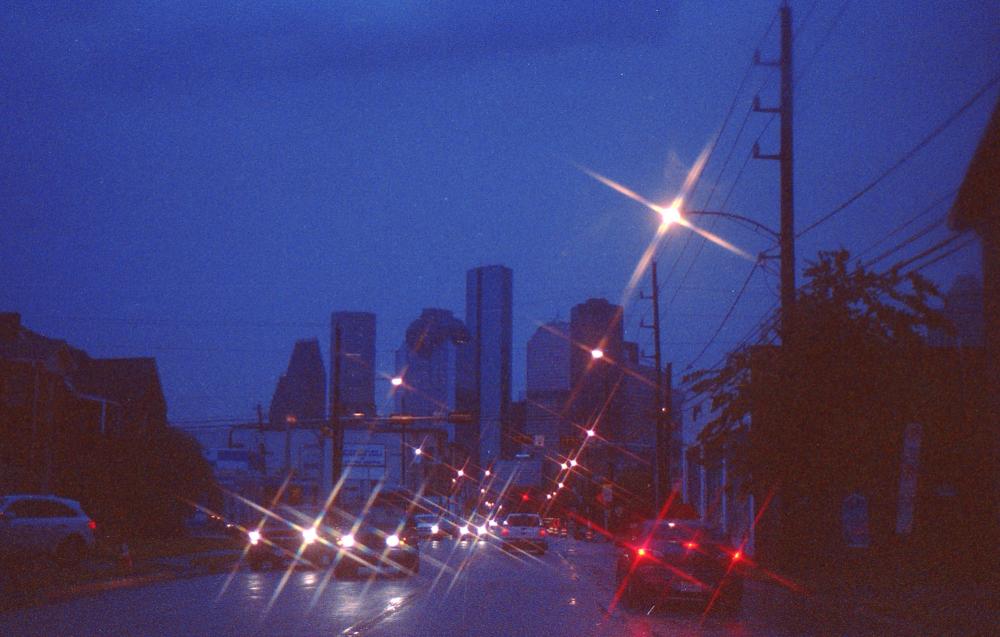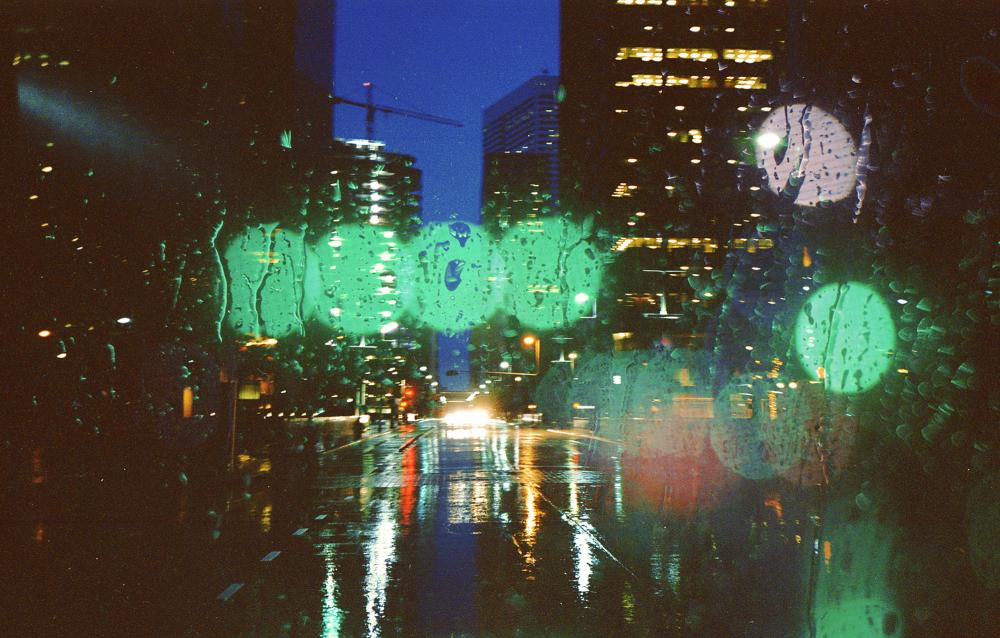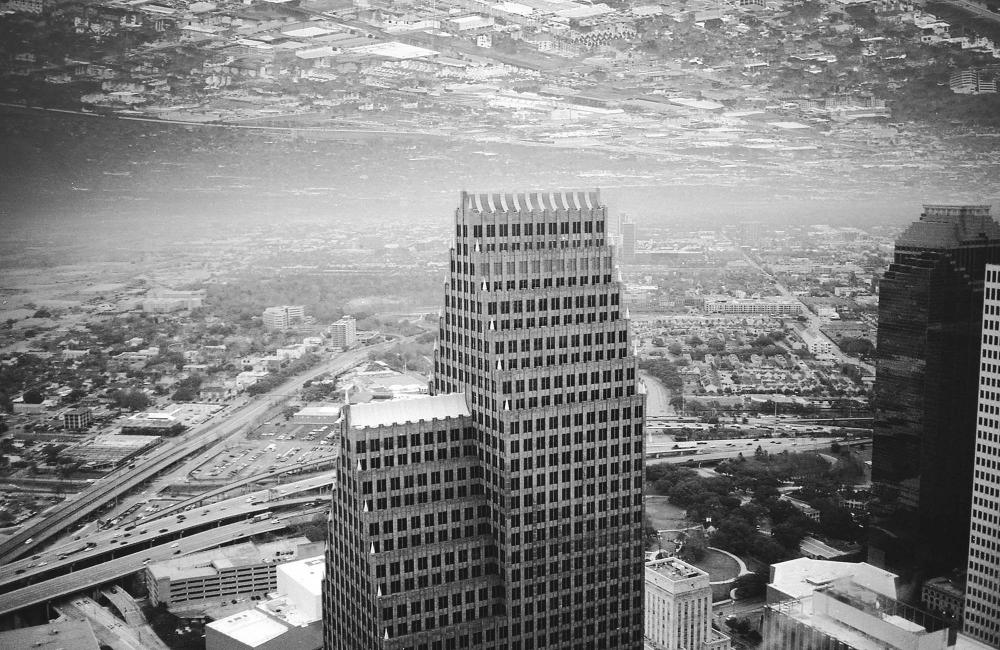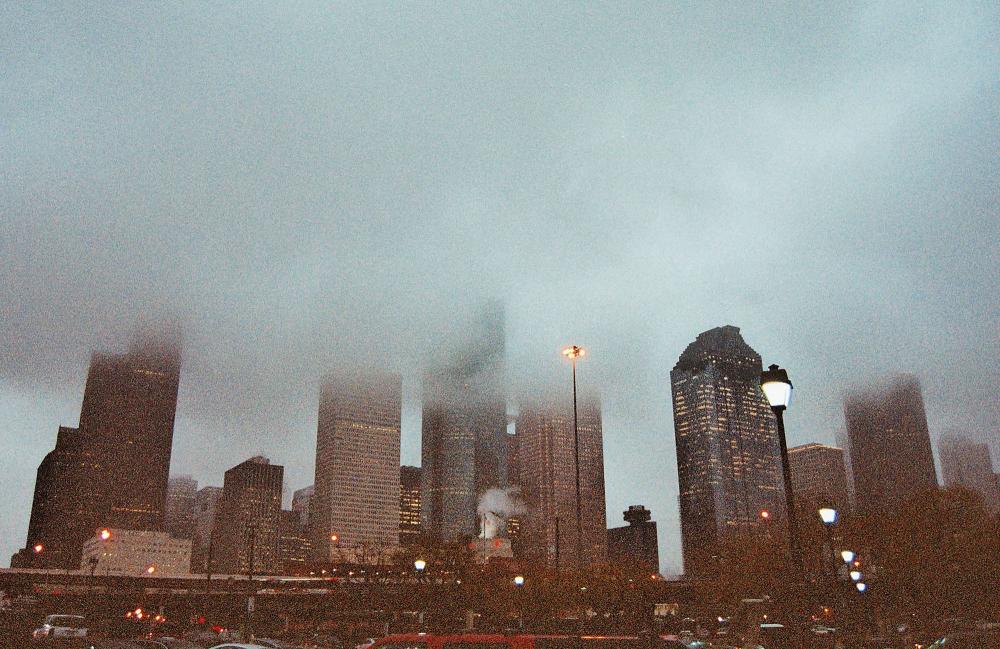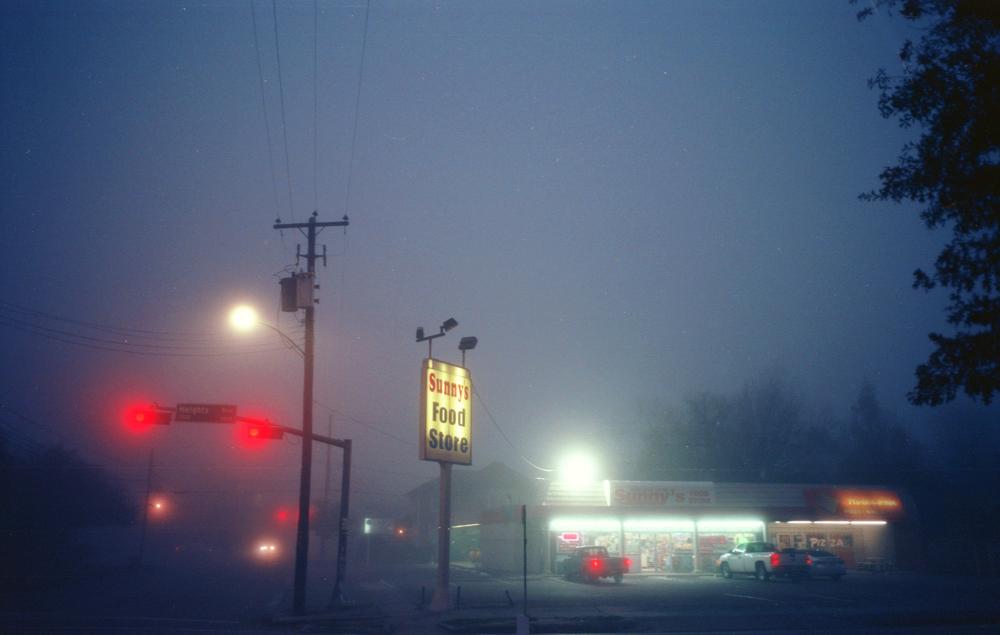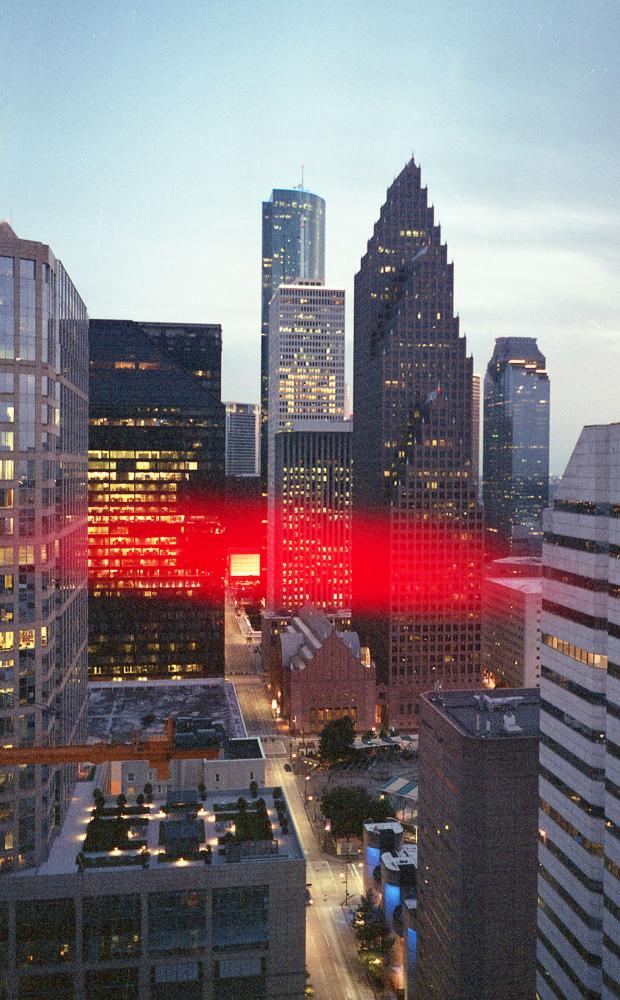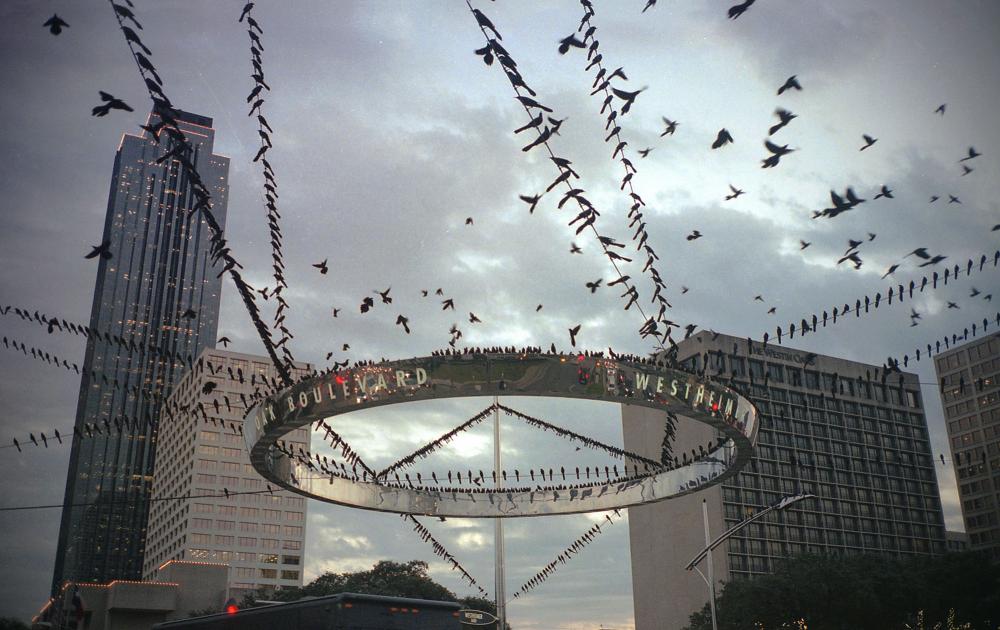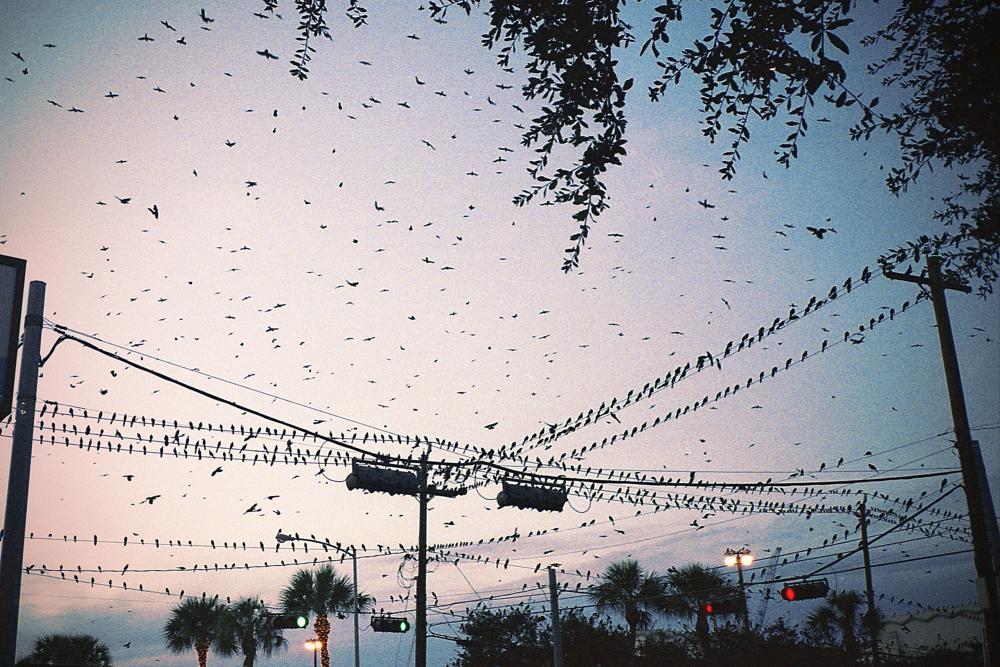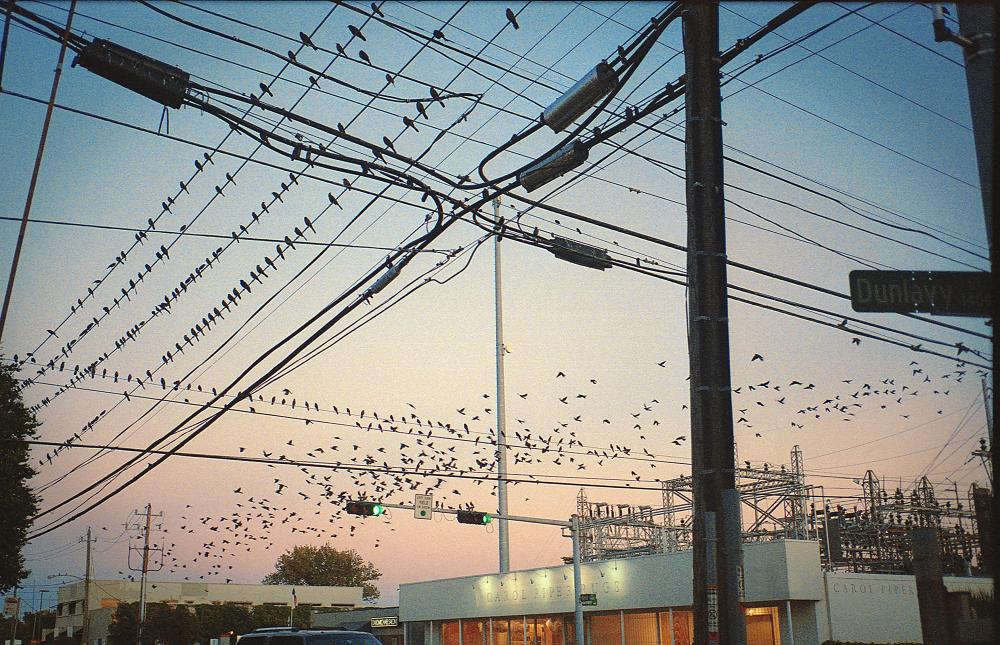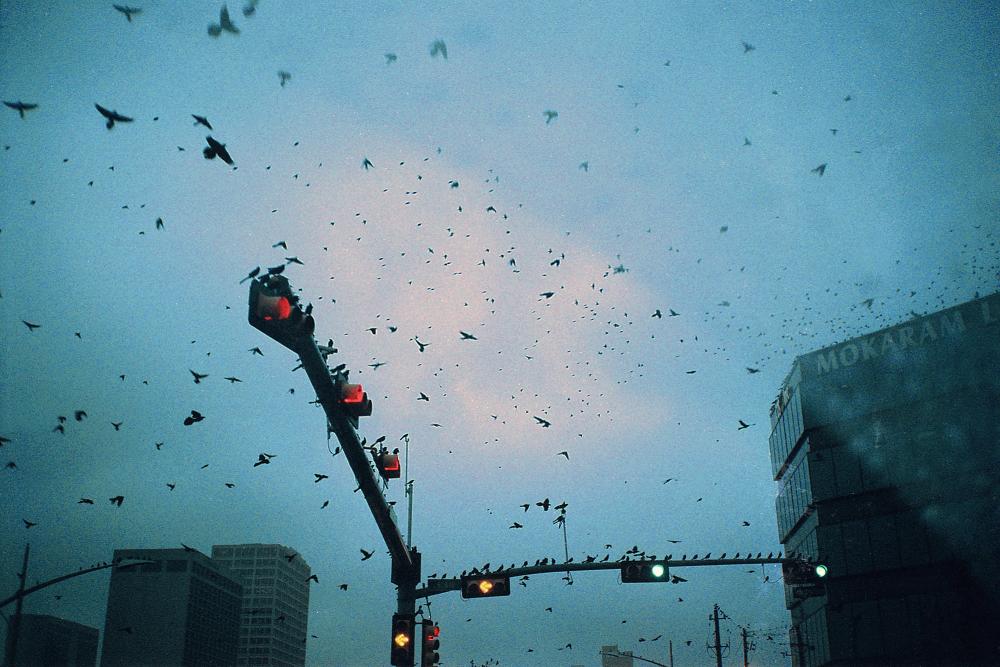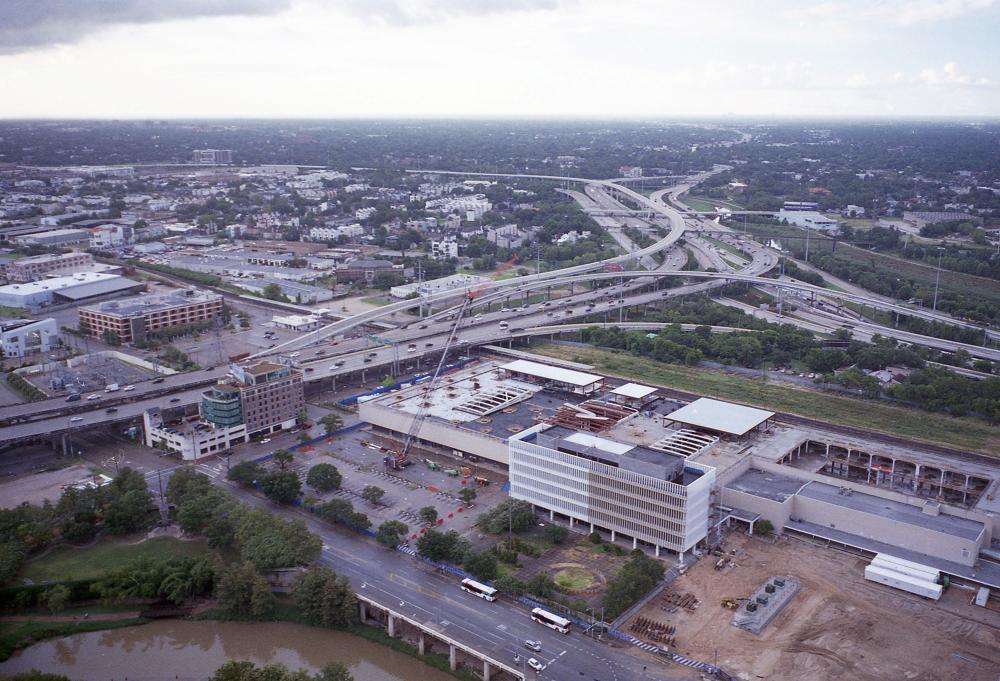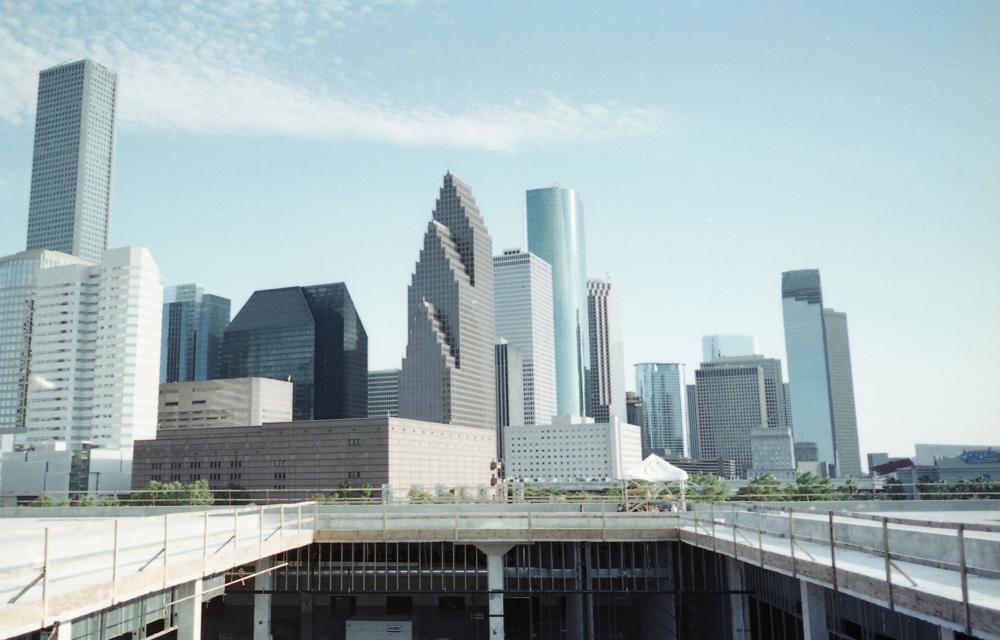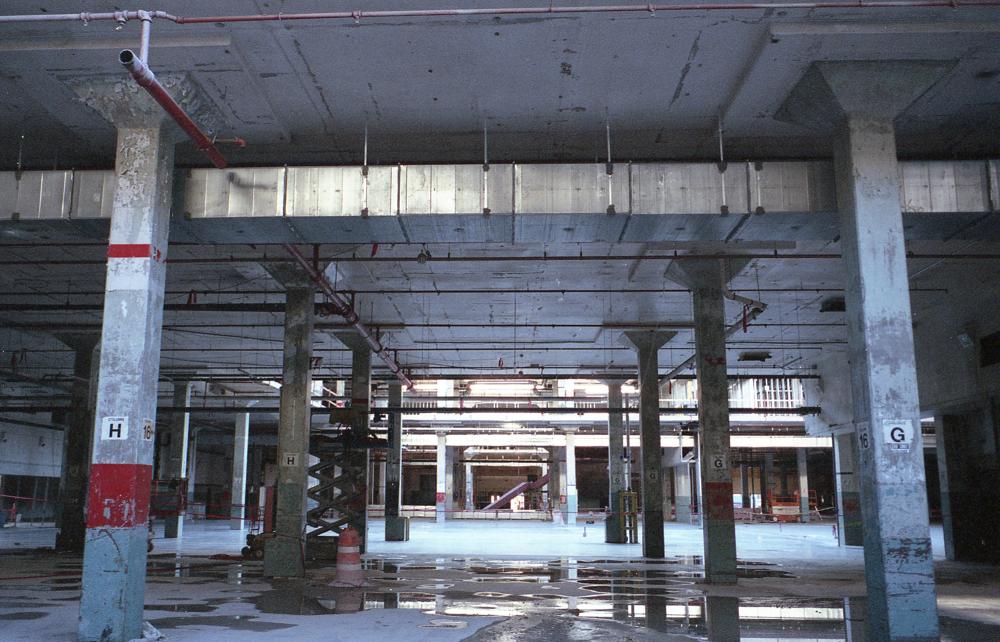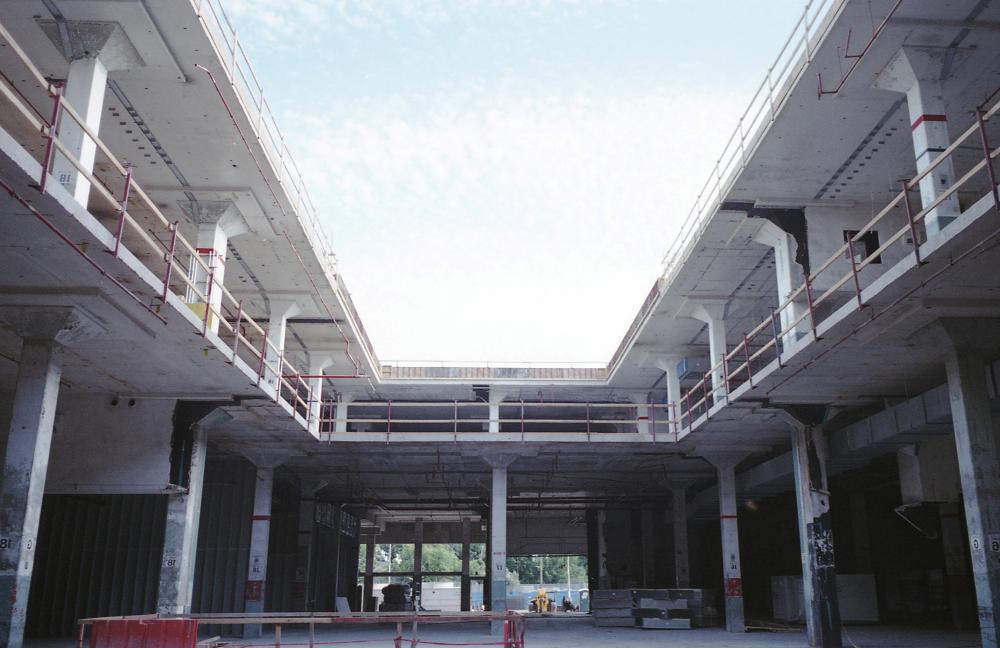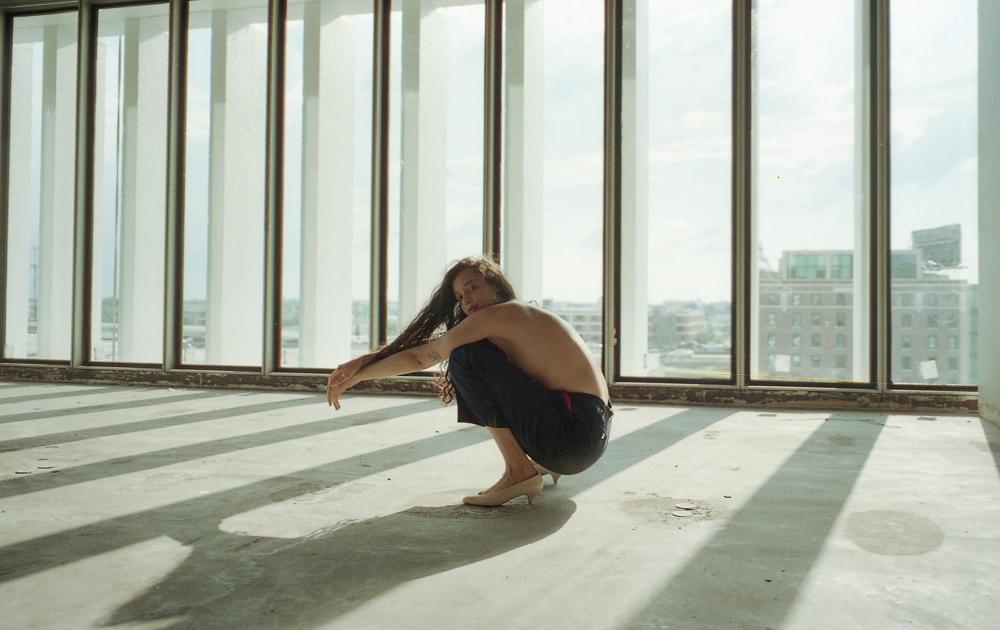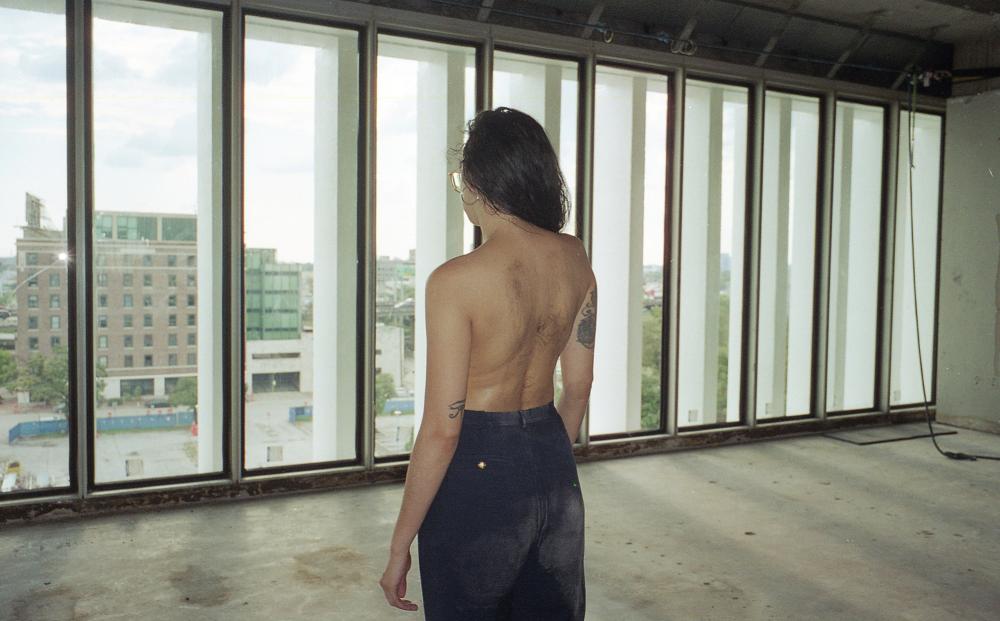Tamara Lichtenstein is a photographer based in Houston. Her images, regularly with posed women as their subjects, are powerful and dreamlike. Perhaps they’re about intimacy—or, maybe, its denial. Lichtenstein’s work has a nomadic quality—figures are seen swimming in the ocean, crossing the desert, inhabiting interiors, or overlooking skylines—but Houston is her home and an ongoing inspiration. She spoke with Cite's Editor Jack Murphy via email.
What’s your relationship to Houston? What do you like about the city?
I was born in Santa Cruz, Bolivia, but moved to Texas when I was a toddler. I’ve lived here my whole life and would be completely content to stay here. I thought about moving to Los Angeles for work a couple of years ago, but I’m glad I decided to stay. This city is so diverse and full of culture in the most authentic way. I love my community! Houston is just home.
How did you start making photographs?
I didn’t have many friends in elementary school. I was an outcast, so I latched onto anything creative. I had a notepad with my “fashion designs,” I swore I was going to be a famous singer, and I wrote poems that I kept under my bed. My mom used to buy me disposable cameras and I would take pictures of everything around me. I fell in love with the idea that once you capture something on film, it’s with you forever. How are you going to forget something when you have everything documented? In middle school, my mom bought me my first digital camera, a Sony Cybershot with 3.2 megapixels. I still have it!
Everything really changed when I took a photojournalism class during my sophomore year of high school. I learned how to develop film and completely fell in love with the whole process. I’ve always been a very nostalgic person, so I was drawn to the feeling of shooting film. I don’t know how to explain it. The grain in the photos, the colors… They take you somewhere else.
What do you see when you look at Houston’s built environment? What is worth photographing?
I think Houston has the most beautiful skyline; the buildings seem so strong and powerful. Maybe I feel this way because it’s home, but if you look at Houston on a foggy night or during blue hour, it’s striking. Houston is the largest city in Texas and it has the tallest buildings in the state. It almost feels like you’re in Blade Runner or in the distant future at night.
What’s your relationship to architecture? Does it make an impact on you? How does the space where you’re working affect what you do?
I’ve always been an admirer of architecture and symmetry ever since I started taking photos. To be honest, I haven’t taken the time to really admire the architecture in other places because Houston is just so vast and captivating. There’s always something new. During my short thirty-one years of existence, buildings have changed, lighting has been installed, art has been created, and so on. It’s been amazing to see my city grow so fast, and I’m grateful to be surrounded by such an inspiring space that gives me a variety of places to explore. I feel like I know Houston well, but I also work well with a change of scenery, so I keep finding new sites. There’s beauty everywhere!
What inspires you to make images? How is looking through a camera different than looking with your eyes, if it is?
I think the number one inspiration for me is to be able to document everything and capture it such that it can evoke feelings in someone other than me. I’ve never been good with words, so I use visual communication. I have a deep fear that if I don’t photograph something, I will forget it. In my opinion, there’s no difference between looking through a camera and looking with my eyes besides wanting a moment to last beyond me in this lifetime.
How do you work with models or subjects? When things go well, what’s in alignment?
I tend to work with people I know or want to get to know. For me, a connection with the subject is very important when it comes to producing good work. If there’s no connection, I feel like there’s no purpose in my work.
It’s a different story when it comes to commissioned work; there’s something about getting paid that’s inspiring for an artist.
Is there a difference between work you do for others versus what you shoot for yourself?
Definitely. I’m usually pretty firm when it comes to my vision, so I don’t take direction well unless it’s commissioned. Most of my work is for myself. I have turned down commissioned work because it didn’t creatively align with me.
Can you share how you work, technically? You make images using film, but are there other manipulations?
I take my film to FLATS film lab on Montrose and then scan it with a negative scanner. The scanning process can take days or even weeks, but it’s worth it. I put good music on, stay in my pj’s, and drink lots of coffee. I also do some post processing (like color correction in Photoshop), but that’s pretty much it. I haven’t developed my own film in over a decade, but it would be amazing to eventually have my own dark room once I have enough space.
What projects do you have underway?
Since the beginning of 2020, I’ve been working on self-publishing a book of my work from the past decade. I just finished a video project for POSTHTX that was delayed due to COVID-19. I also sell archival prints online. For the most part though, I’ve been laying low for the past few months to focus on my new venture Lich Goods, a collection of vintage pieces curated by me.
Tell me about this vintage goods operation.
For several years now, I’ve furnished my home with only vintage and mid-century decor by thrifting, going to estate sales, and looking online. I always thought of starting a business with this hobby, but I was so consumed with photography that it never seemed to be a reality. Since the pandemic struck, photography has been slower than the usual, so I decided to finally start something new. For the past few months, I’ve been curating mid-century modern furniture and other vintage pieces on my Instagram business account, @lichgoods. I’m learning how to refinish furniture and bring other old goods back to life. I do sell some bigger pieces as-is, but they are always in great vintage condition. This venture has consumed all of my time so there hasn’t been much time for photography besides the photos I take for Lich Goods and my commissioned work. I do still carry my camera with me at all times, just in case.
And, what’s this video project you have with POSTHTX?
The POSTHTX video is for LiveNation. This is my first video project as a director of photography; I hope to do more in the future. I took tons of timelapses of Houston—from the clouds moving during sunset over the skyline to the busyness and lights during rush hour traffic. I have been able to see POSTHTX under construction firsthand, and what a sight it is! I feel very fortunate to have been able to be a part of the process.
Tamara Lichtenstein is an American-Bolivian film photographer and art director currently residing in Houston, Texas. She reveals through her work that her journey is a voyage from youth to womanhood. A master of the tableau vivant, at times the American photographer’s work approaches a form of modern day poses plastiques, albeit one presenting a more subtle version of sensuality and eroticism. Deceptively, Lichtenstein’s photographs conceal a deeper sociological dimension; one infused with a calculated psychological content. Friend, lover or muse become willing participants in the photographer’s mise-en-scène ; involved in a secret revolt, a silent refusal, a game played with life and reality. Lichtenstein’s work expertly captures a constant state of becoming.


